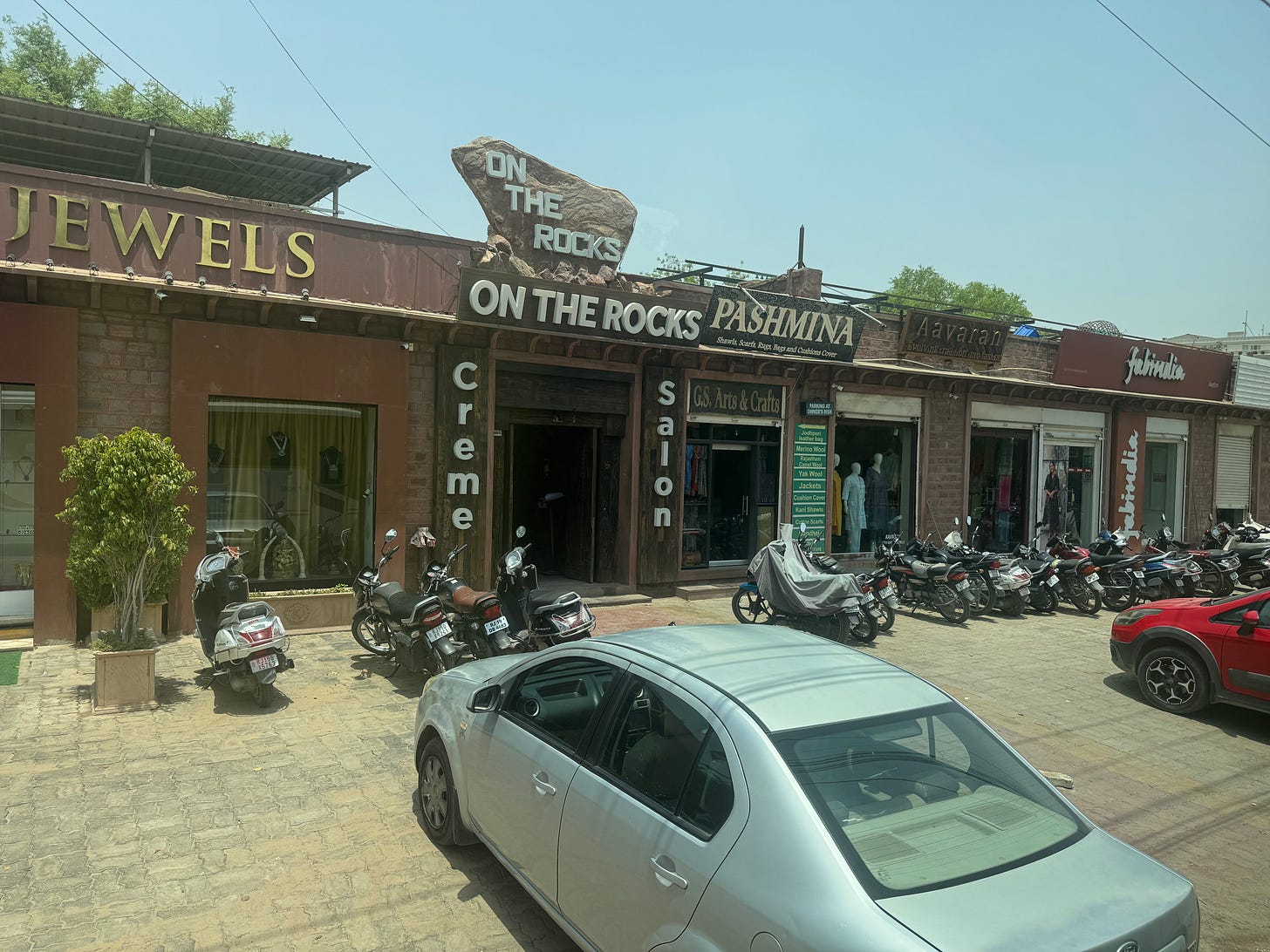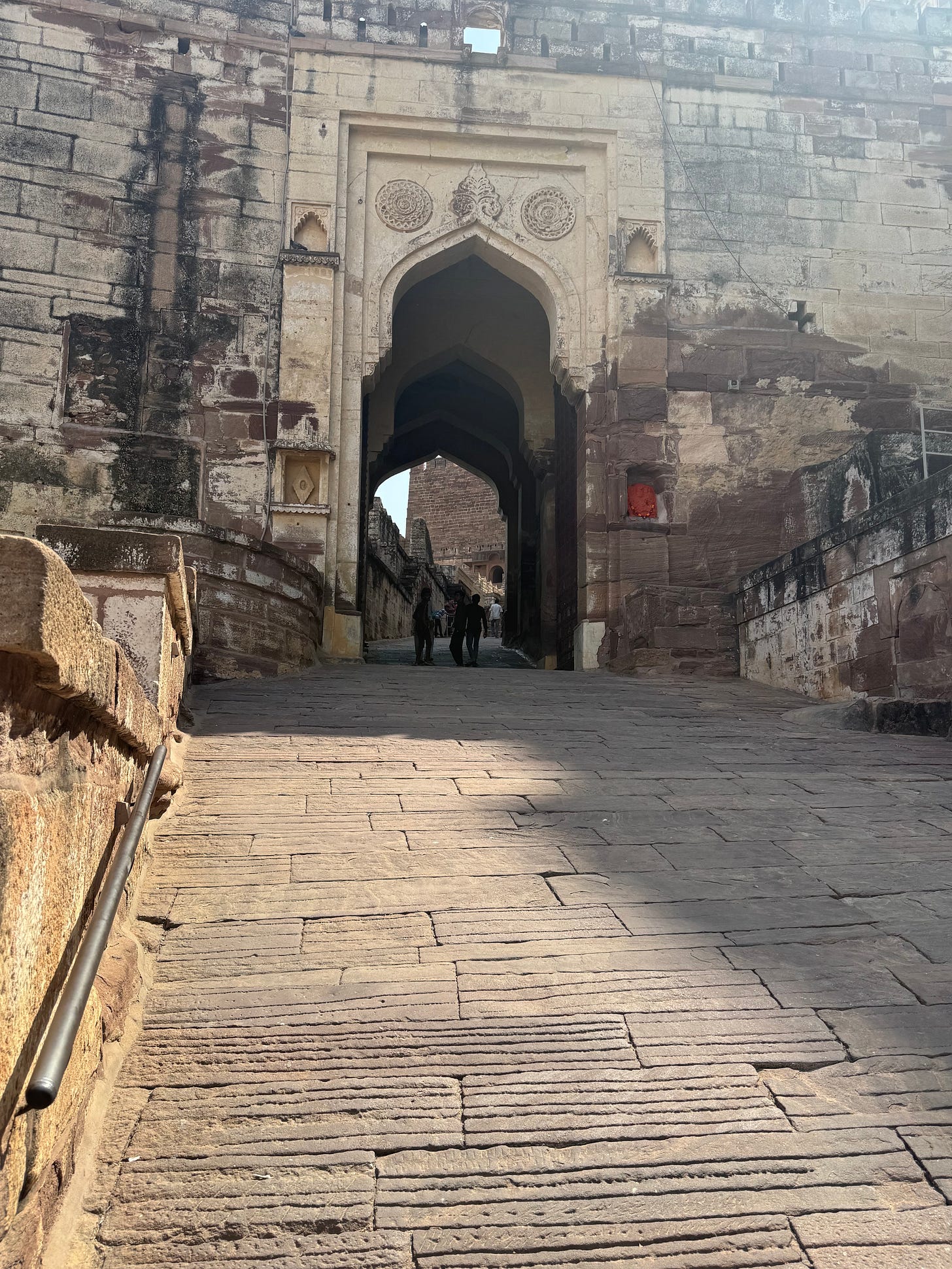We made it to Jodhpur. Not surprisingly, it was both the same in some ways, and yet so much change has occurred over 30 years.

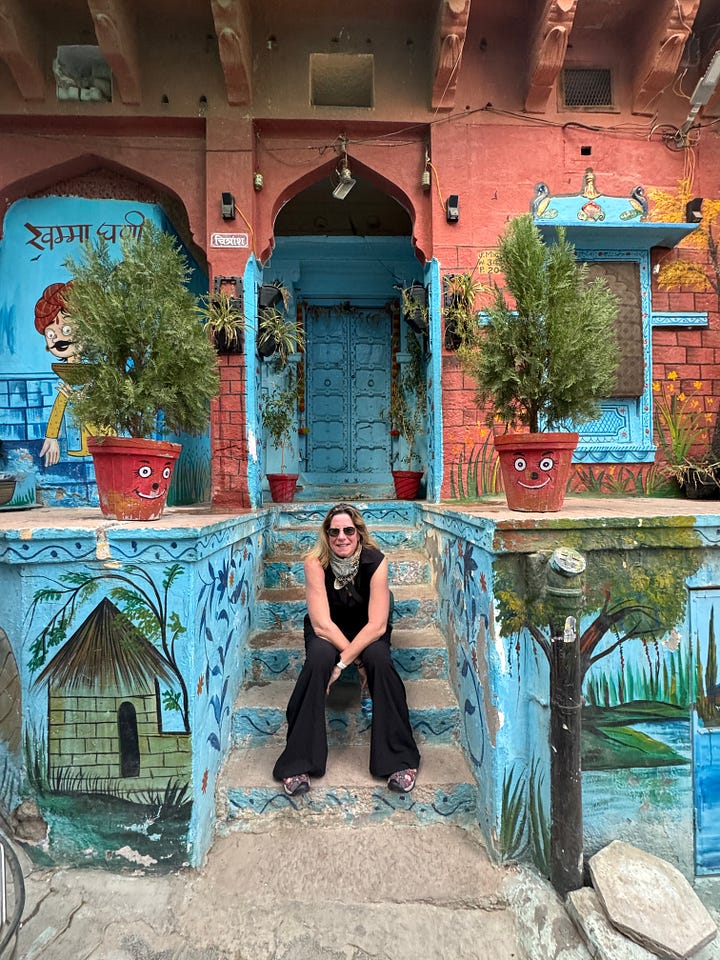
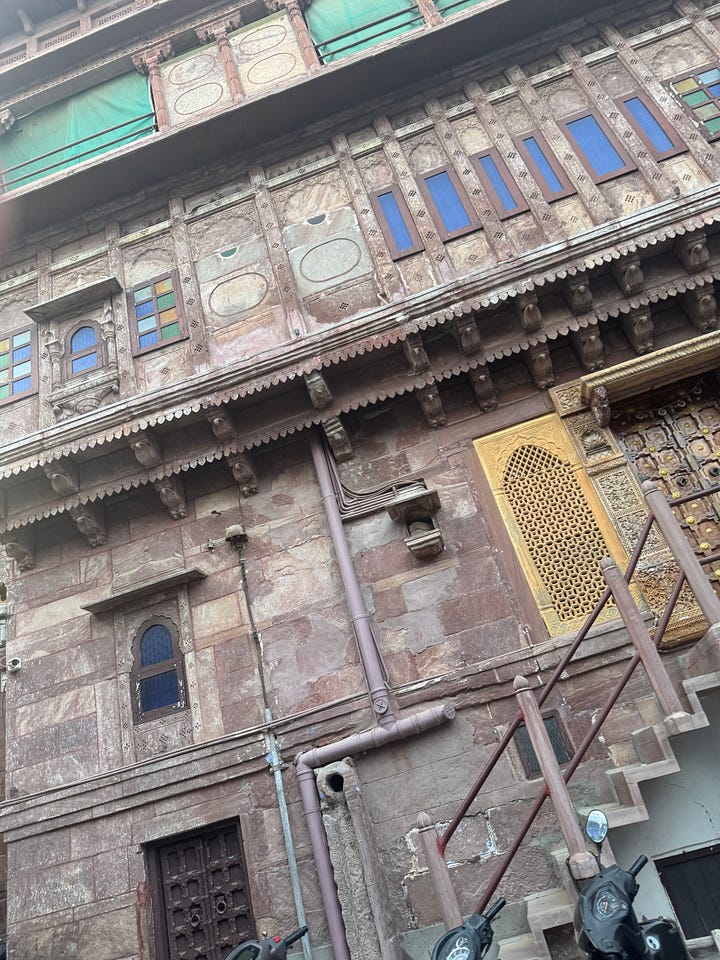
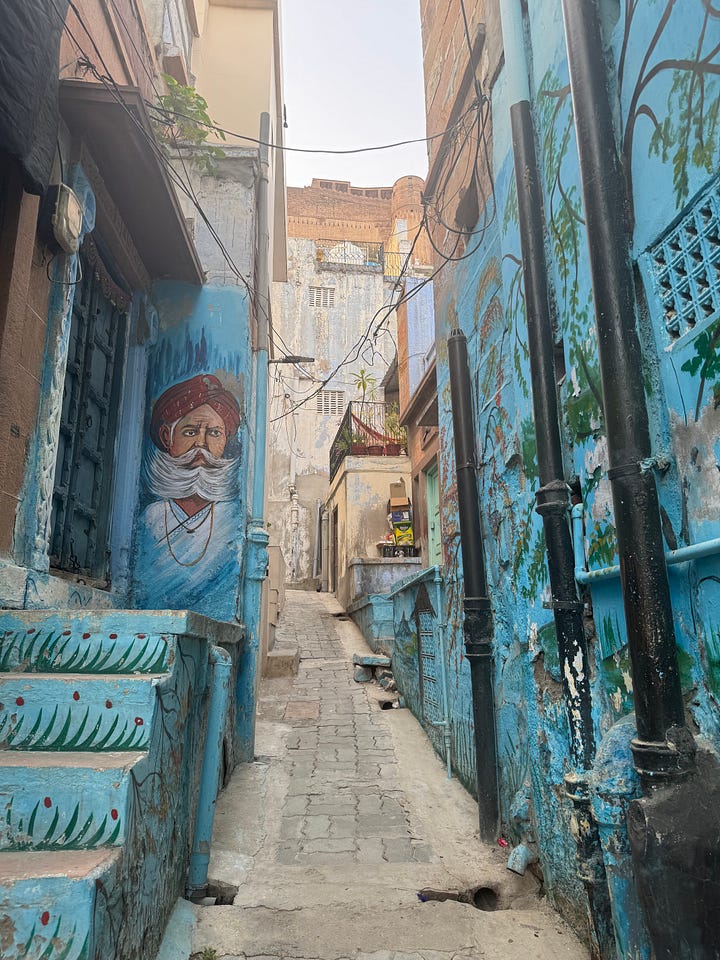
The sheer size of the town is unimaginable to me now. It must be 4 or 5 times the size it was when I first arrived in 1996. I didn’t recognize much at all. We went to the restaurant On the Rocks the first day, and I vaguely remembered dining at this place before, but recalled how expansive it once was, with an enormous garden in which we ate by candlelight and twinkle lights. Now, it is still lovely, though smaller, and the garden is surrounded by shops and other establishments.
On day two in Jodhpur, we set up for the Mehrangarh Fort. We took a bus up to the back gate, and instead of the steep climb to the top of the fort premises that I so deeply sweated through many a Shalwar kameez, they have now installed an elevator. The entire right wing of the Fort is now a curated museum, with access to the mirror room, and other spaces and places I don’t remember or were not accessible to us and perhaps under restoration at the time. In all of its glory, this section of the Fort showed the remarkable construction and care that each element in the fortress provided for its inhabitants. Unlike the other forts we toured, Mehrangarh was attacked in its heyday, and has cannonball scars to prove it.
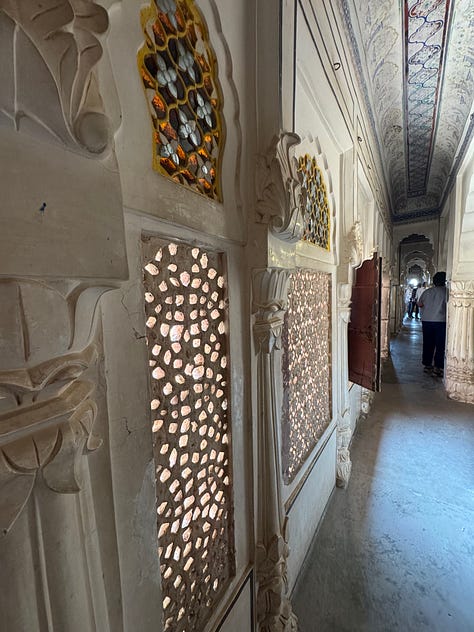
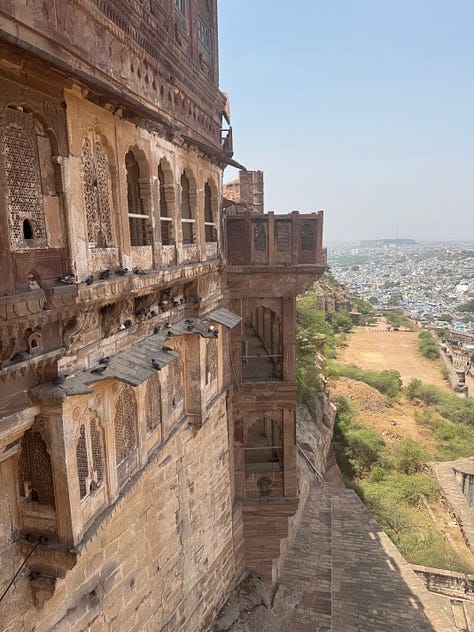

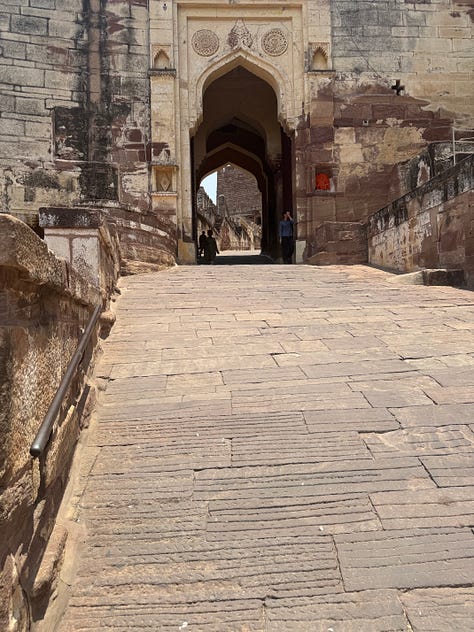

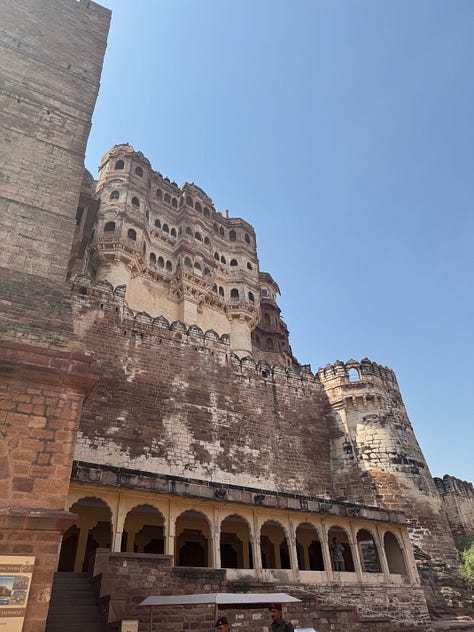
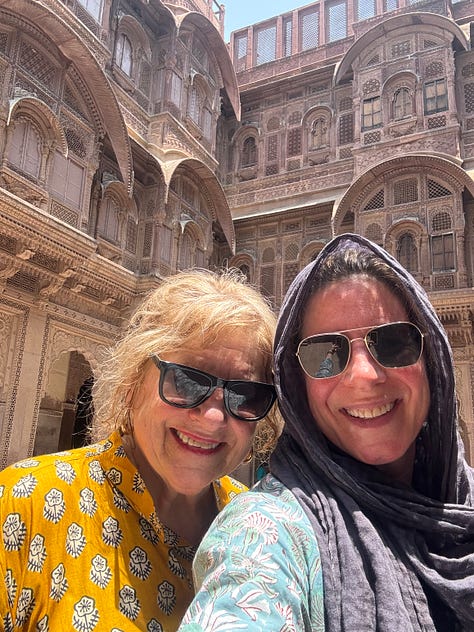
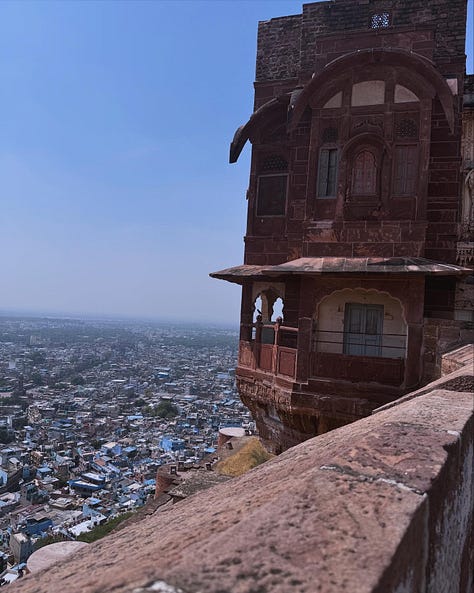
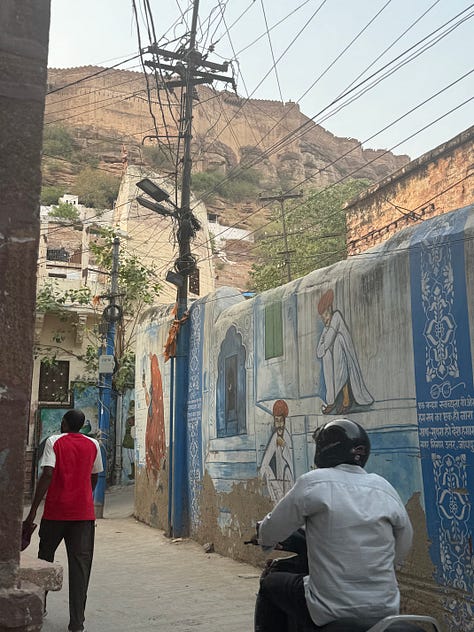
It is a very surreal feeling to revisit a place that had such a physical and psychological impact on who I am. It’s both reassuring and foreign, connective and isolating. The mind plays tricks on you, or, at least mine does, and though the memories are fuzzy, the feelings associated with the space are still vivid. Maybe as we get older (wiser?), we start to better see our experiences and choices, mishaps and misfortunes as soft reminders of how we show up in the world. As a 20-year-old, I walked ferociously into the wind, allowing it to shape me, smooth out corners, clear out spaces for what I didn’t yet know was in store. As a nearly 50-year-old, I feel more graceful (though heavier, in more ways than one) and weathered, slower, and more intentional. And rather than running into the wind, I feel it carry me gently, with more supportive hands and bodies beside me, grounding me to what is real.
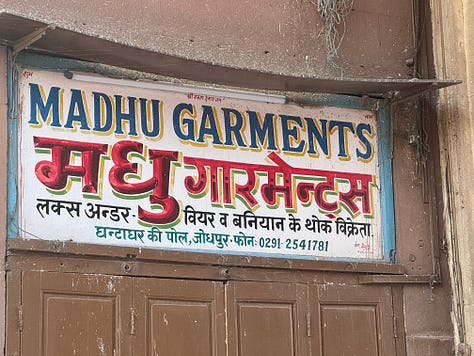
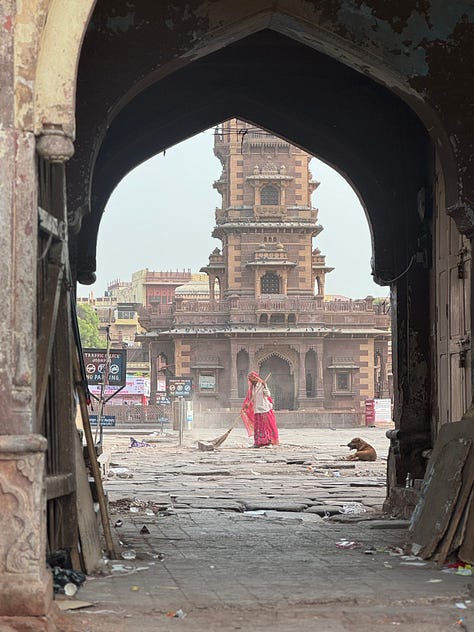
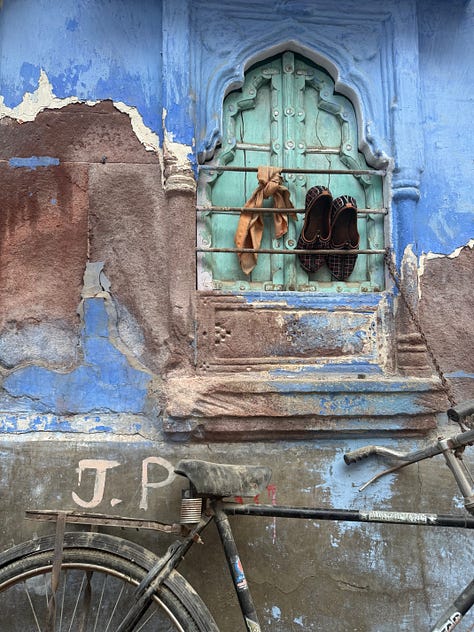
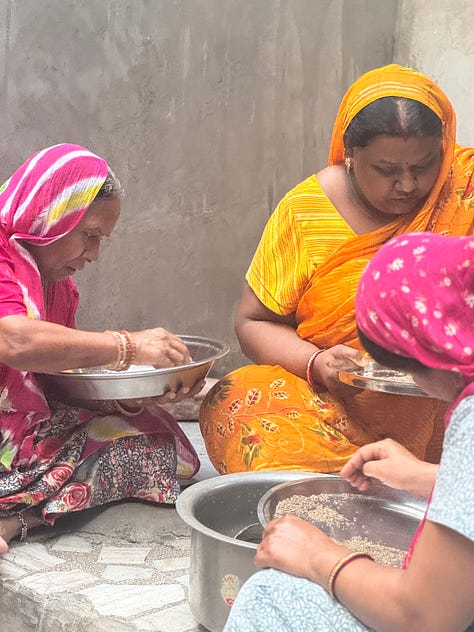
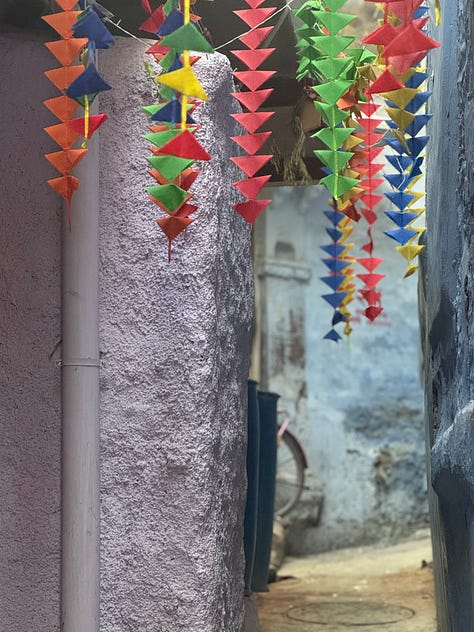
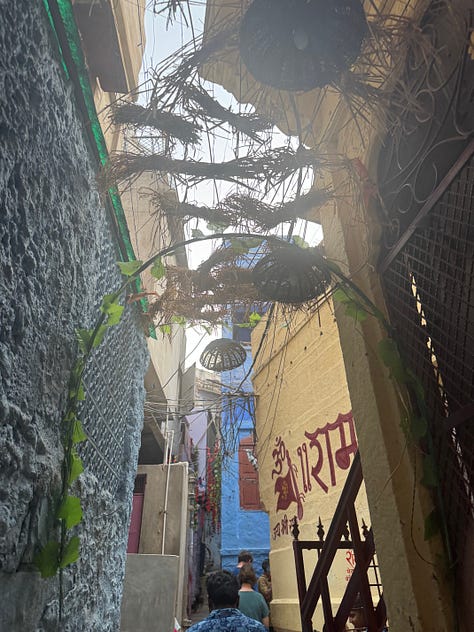

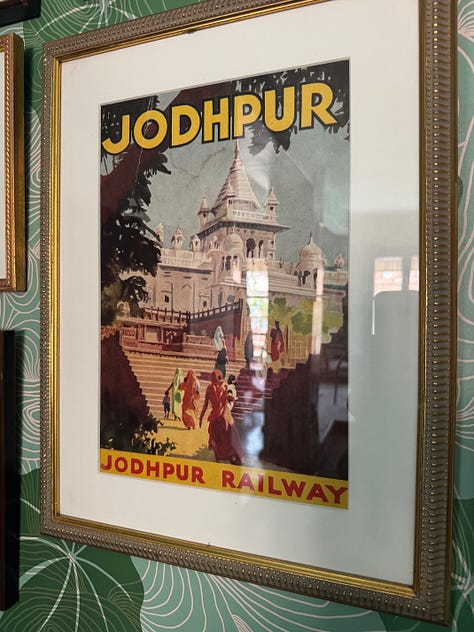

Places carry stories about who we were, and revisiting them allows us to appreciate (warts and all) who we have evolved to be. I’ve tried to stay present for this as much as possible, even with the chaos of life right now. It is hard. Our bodies and minds have been trained to manage checklists and move through tasks, and the stuff of life that requires attention and focus —our families, our work, the spaces we live in. And then years quietly pass, the record slows, and you wonder how it all came to be.
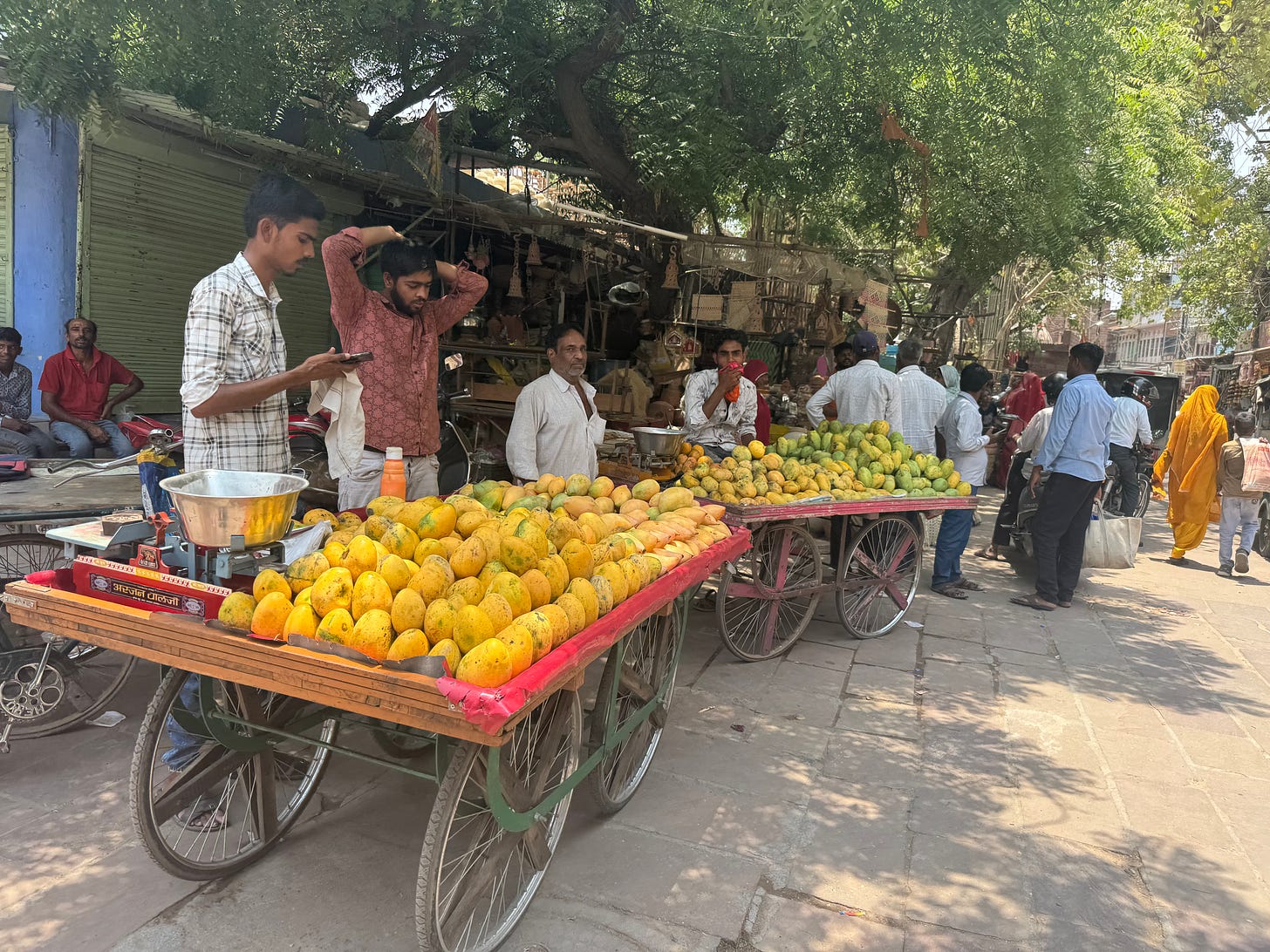
Ferris told us GenXers way back when that life moves fast, and we need to pay attention or we will miss it. Maybe my generation needs a reboot of that movie with a 50-year-old Ferris reminding us that the people in our lives, the places that we share them with, the risks that we take, are the moments that make life magical. I think old Ferris would tell us it’s all is right here in front of us —if we just put down our phones and pay attention.
So, in my remaining 24 hours in India, I’m going to try not to daydream about my first salad, or sleeping through the night, or wondering if I will ever smell normal again. I’ll breathe in this auspicious air, do as many devotional prayers to as I can to every Ganesh I come across, and shove my face with one more dosa, one more chai, and that last scoop of paneer tikka masala.
Because life is too beautiful to waste. (Thanks, Ferris).




